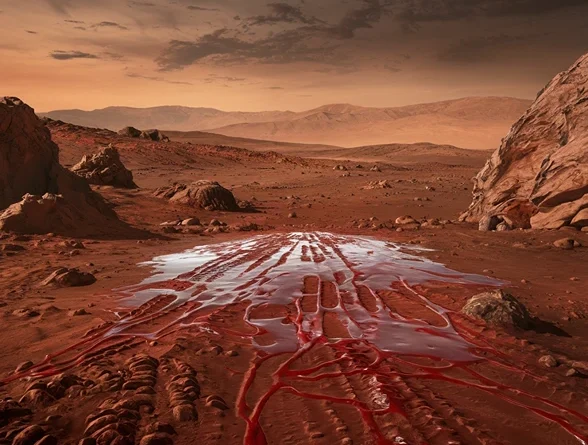Scary Facts About Mars That Will Make You Red And Lost From Fear
Of the list of planets known to man, Mars has always held a place of honor in my eyes. Perhaps because its color – you guessed it – is red, which is associated with fear in more ways than one. Another possible reason is that Mars is one of the planets where the question of whether life is possible often arises, mainly because it is the second closest to Earth (after Venus), so we are very interested in it. Mars indeed has the potential to become a terrestrial planet that could allow life or even habitation if people continue to destroy Earth at a worrying rate – which can raise anxieties. But it is still hazardous, offering unique conditions.
In the following review, we will present some scary facts about Mars that will show you that the fourth planet from the Sun has some frightening sides, with a clear conclusion: that the road is still long before it is possible to think about life there.
What Is The Degrees On Mars?
One of the main questions about Mars, or any other planet, is how much the temperatures there allow humans to live there. Mars, in general, stands out for its extreme temperatures, which make it very difficult to accomplish the mission.
On the positive side, in the warmer months and the equatorial region of Mars, you can reach temperatures of about 20 degrees Celsius in the summer. In this sense, you can put a “V” on the weather on Mars, but it’s a “V” with many asterisks.
The problem begins in the winter on Mars, especially in Mars’s south polar region. Temperatures can drop to -140 degrees Celsius (!), averaging 63 degrees below zero. The temperatures during winter in Mars are not conducive to life because they could freeze to death any living creature in seconds. It may be possible to solve some of this with adapted equipment and space suits, but it is clear that permanent settlement becomes a slightly more complex task.
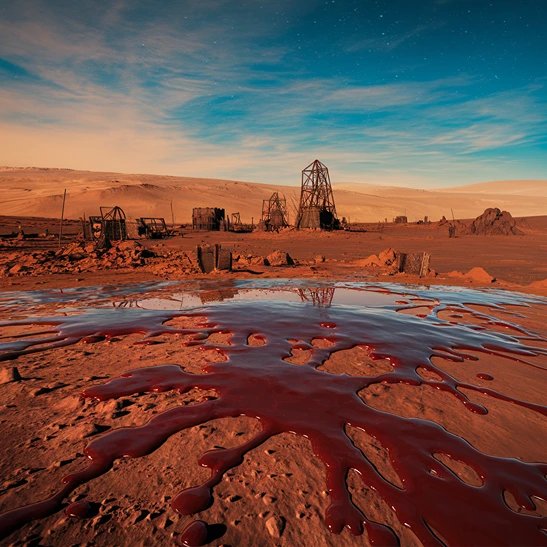
💀 Killer Deals & Scary Recommendations 💀
🎭 Costumes & Accessories
HalloweenCostumes Fun Costumes Entertainment Earth
🛒 Online Shopping
AliExpress Amazon Walmart Etsy
🧛 Collectibles & Horror Brands
Funko Hot Topic Lego Spirit Halloween
🎢 Attractions & Tours
GetYourGuide Tiqets Viator Klook
📖 Blogs & Horror Sites
Bloody Disgusting iHorror Fangoria
🩸 Disclaimer: Some links are affiliate links. The price stays the same – it just helps keep the site alive 👻
Can Humans Breath On Mars?
It’s not just the cold that makes life difficult on Mars. The air on Mars contains very high percentages of carbon dioxide (about 95%!), with nitrogen (about 3%), argon (about 1.6%), oxygen (about 0.4%), and other gases, making breathing on Mars an impossible mission without the proper equipment.
This combination of high concentrations of carbon dioxide and minimal oxygen makes it very difficult for humans, animals, and plants because the air they breathe is toxic. On the other hand, with appropriate equipment such as space suits and deep space on the planet, there is a certain chance of coping with this.
A pressure suit is essential on Mars due to another difficulty: the atmospheric pressure on Mars is very low, so a person without a suit would not be able to survive. It is still unclear whether there is life on Mars, but in any case, this is not the life of creatures under the conditions we know. From a practical point of view, potential colonists would have to rely on oxygen production systems or always walk around with a constant supply, with any malfunction likely to lead to suffocation and rapid death.
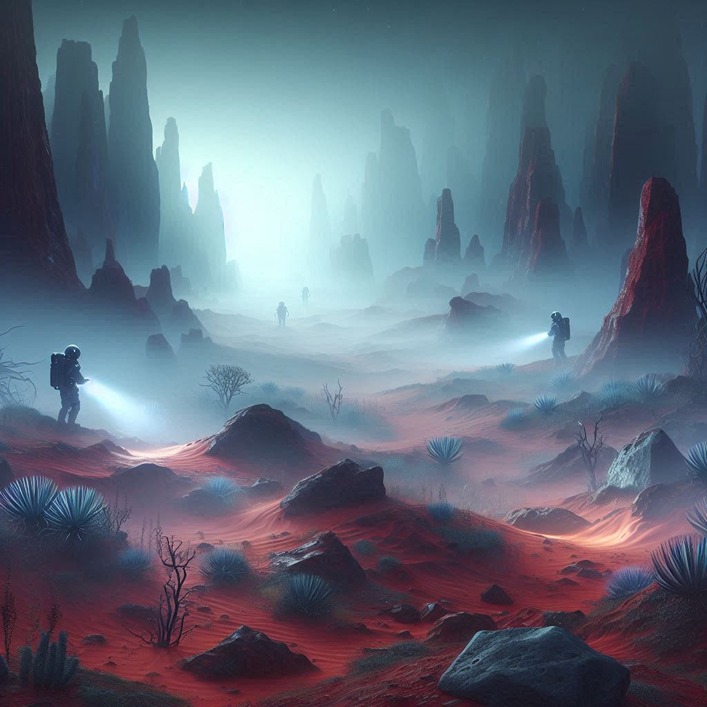
Why Mars Is Red?
It is challenging to prepare a review of facts about Mars and ignore the most basic question related to the color that characterizes it and gives it its name. Mars is known by the nickname “The Red Planet” due to its surface color, which can increase anxiety levels since red is connected almost naturally with danger, some would say even blood.
The question is why this happens, and is it dangerous? If, for some reason, you thought that Mars is red because rivers of blood flow through it, you can rest assured. Mars is red, but not from blood and not from wine.
The main reason is that the soil of Mars has an imposing amount of iron oxides of this color, combined with the changing conditions of the planet throughout history. If, in ancient times, there were higher amounts of water vapor in the atmosphere of Mars, the combination of the lack of oceans and the absence of life forms to absorb them caused the water and oxygen to be absorbed into the planet’s soil. They caused the oxidation of the iron in the soil and the reddish color that characterizes it.
What Is Mars Named After?
The name “Mars” is also related to its red color. As trivia fans know, the planet is associated with the god of war, Mars, from Roman mythology. The reason is that the red appearance of Mars, which manages to stand out even in the night sky (with the proper viewing equipment, of course), is closely associated with war or, if you like, death.
Mars Sandstorms May Be Deadly
Mars is also known for its powerful sandstorms, which can cover most of the planet in sand or even the entire planet. If you were building on a storm that lasts a few minutes or hours so that you can find shelter until the fury passes, you would be disappointed. Powerful sandstorms on Mars can last for weeks or months while raising dust, heat, and other impurities to an altitude of tens of kilometers.
You don’t have to be a weather or sand expert to understand why this is dangerous. Inhaling sand in such quantities into the body can make breathing difficult and cause serious health problems, even life-threatening. The sand can also damage vital and electronic equipment, which may be what allows life for a specific time. Over time, storms block the Sun’s rays, so solar energy is out of the picture.
Meet The Tallest Volcano In The Solar System
There is no consensus in the scientific community on what is the tallest volcano in the world, partly because the degree of volcanic activity plays a role here. Still, Mars takes the tallest mountains on Earth by storm. The Olympus Mons volcano, which rises to a height of more than 21 km (!), is the highest in the solar system, at least as far as humans know.
The mountain is, of course, named after the Olympus volcano in Greece, but it leaves behind red dust because the famous mountain in Greece reaches a height of “only” about 3,000 meters. Even concerning other high mountains, the comparison is explicit. To put it in perspective, Olympus Mons is hundreds of percent higher than the tallest mountain on Earth, Mount Everest (whose summit is about 8,849 meters above sea level), or the Cotopaxi volcano in Ecuador, which reaches “only” about 5,897 meters.
The encouraging news is that the Olympus Mons volcano is considered inactive today. Still, there is a fear of future eruptions, which would be particularly destructive due to the conditions on Mars. The thin atmosphere, for example, could make it easier for lava and ash to spread over long distances.
The Largest Canyon In The Solar System Is On Mars
On Mars, you will find Valles Marineris, the largest canyon in the solar system: you know, a valley or deep channels with steep banks and sheer cliffs.
Valles Marineris is about 4,000 kilometers long, about 200 kilometers wide, and about 7.7 kilometers deep. According to the accepted assumption, it was formed due to a crack created by cataclysmic movements on Mars (and by the way, did you know that there is a separate term for earthquakes on Mars, called “Marsquakes”?).
The Mariner 9 probe discovered the canyon in the early 1970s, extending over an area about the size of Mars.
Cosmic Radiation On Mars Is Super Deadly
Earth provides almost hermetic protection against dangerous cosmic radiation thanks to its thick atmosphere and magnetic field. The problem is that on Mars, the atmosphere is slightly thinner (about 1% of its surface area on Earth).
As a result, there is no filtering of ultraviolet radiation from the Sun, which can cause serious problems such as genetic damage, increased risk of cancer, or damage to the human immune system. Due to the lack of sufficient space and knowledge, we will not address why Mars does not have a sufficient magnetic field here, but the bottom line is that it prevents protection from the solar wind.
If you do one thing and another, you get radiation that can be destructive and life-threatening. In practice, there are various solutions for how to protect from radiation on Mars. The solutions came from apocalyptic movies, such as living underground or in buildings that include camouflage or using robots to build these structures.
Bodies On Mars Are Preserved (Almost) Forever
If you’ve seen enough horror movies in your life, you know what happens to a body that is left in the open air for a while. According to some Space Agencies, in a very short time, we are expected to see bacteria, flies, worms, and other pests on the body that will cause the flesh to decompose and the body to be destroyed. On the other hand, a body of Mars may be preserved in frozen conditions for thousands or even tens of thousands of years on Mars.
Radiation exposure will also cause frequent changes in the structure of DNA, so even if we want to find out, for example, why that person died – we will probably not get the answer.

Is There Water On Mars? Yes, But Not Sure If There Is Life
In 2015, NASA announced they found some water on Mars, or at least evidence of flowing water. The InSight spacecraft detected evidence of an underground reservoir of liquid water at a significant depth of about 20 km below the ground. Using mathematical and physical models, researchers understood that the water had seeped into the planet’s crust through cracks and pores. At one point, they discovered salt water on Mars even today.
Due to Mars’s temperatures and surface conditions, most of the water detected is frozen at the poles or underground. Another significant percentage of the water has evaporated thanks to extreme temperatures and minimal atmospheric pressure. The discovery of water on Mars is good news, but there is still a long way to go before we can indicate that life exists on Mars.
If Humans Live On Mars, They May Become Orange Giants
Despite much research on the subject, we still don’t fully know how the unique conditions of Mars will affect the human body over time (even though the planet is the most similar to our Earth in the solar system).
The low gravity on Mars could cause bone and muscle loss, blood flow problems, and other physiological changes over time. The dangerous radiation could cause a significant acceleration in genetic mutations in those who settle here, which means there will be a considerable rate of evolution.
We can explain some of these changes according to science: For example, in areas with intense solar radiation on Earth, dark-colored skin develops to protect from the Sun, while in the opposite case, we get light skin, which more efficiently absorbs vitamin D from the Sun.
On Mars, the radiation is dangerous, and the fear is that people with light skin will have difficulty surviving and will, from an evolutionary perspective, secrete more melanin. Over time, to cope with the conditions, there will be a compromise of carotenoids; their color will be further orange, and over time, the inhabitants of Mars may have a dark orange skin tone.
If that is not enough, they may also be very tall because the vertebrae in the back will be further apart, and the blood flow to the limbs will be faster to cope with the minimal gravity.
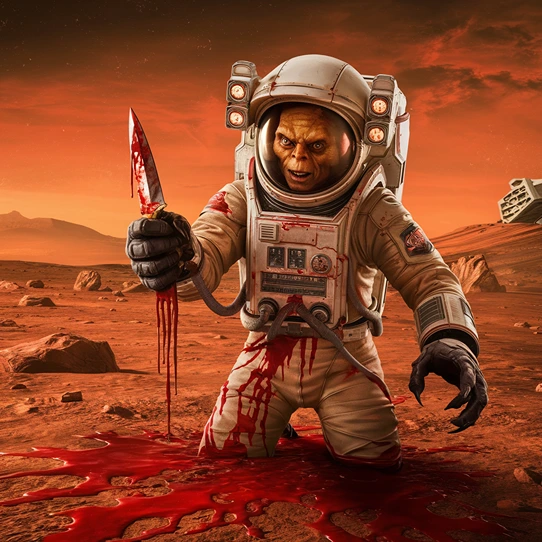
The Soil On Mars Is Toxic
Another tangible danger of Mars is that the soil there is quite dangerous for humans and animals. You will find hazardous chemical compounds in it, some of which are formed from chemical reactions on the surface and can be very toxic. A living creature that comes into contact with rocks or dust that contain them may suffer symptoms such as irritation of the eyes and skin or life-threatening problems when they penetrate the body.
One of these dangerous chemicals was discovered in 2008 by the Phoenix probe and is called “Perchlorate.” We also know this chemical from Earth, where it has multiple usages, such as producing doors for airplanes or missiles. The conditions prevailing on Mars mean that this chemical could destroy a person’s thyroid gland in a matter of minutes.
Also scattered throughout many of Mars, silicates can cause severe respiratory infections. Gypsum, another example, can cause damage to the eyes, skin, and respiratory system.
How Many Moons Does Mars Have? (Two, With Scary Names)
Today, two moons of Mars are known, but it is still challenging to understand what they are and how they got there. One accepted hypothesis is that these moons, smaller in size than the Moon we know (diameters of about 22 km and 12 km), may be asteroids that formed over the years around Mars.
American astronomer Asaph Hall discovered the two moons of Mars back in 1887, which is considered the most significant achievement of his impressive career. Over time, they chose to call them by the cool names of the brothers “Phobos” (the god of fear in Greek mythology) and “Dimus” (the god of terror and horror in Greek mythology).
The reason for this is that, according to mythology, the two accompanied their father, Ares, on the battlefield, and Ares is the Greek equivalent of Mars, which is, as mentioned, the Latin name for the planet Mars. It all makes sense.
How Long Does It Takes To Get To Mars?
I like the alternative rock band “30 Seconds to Mars”, led by Oscar-winning actor Jared Leto (“Requiem for a Dream,” “Dallas Buyers Club,” “Suicide Squad,” “Blade Runner 2049”), for several reasons. their style is very gothic, they have some great songs, and perhaps their biggest hit, “The Kill (Bury Me”,” includes a music video inspired by Stanley Kubrick’s masterpiece “The Shining.”
According to interviews, the band’s name is based on a thesis the band found online by a former Harvard professor. One chapter, titled “30 Seconds to Mars,” claims that thanks to improved human technology, the day is not far off when it will be possible to reach Mars in 30 seconds. The band members saw this as some metaphor for their music or something, and chose the name.
Unfortunately, it takes more than 30 seconds today to get to Mars. The flight time to Mars varies significantly depending on the relative positions of Earth and Mars in their orbits around the Sun. During the optimal period, when the two planets are at their closest point to each other (called “opposition”), the flight can take about seven months. For example, NASA’s Mars Perseverance rover, which started in July 2020, reached Mars in February 2021 after about seven months.
However, under less ideal conditions, the flight might take up to nine months or even longer when the distance between Earth and Mars is greater. Future technologies may significantly reduce travel times – space agencies are developing advanced engines and innovative propulsion methods that could shorten the flight time to about 3-4 months.
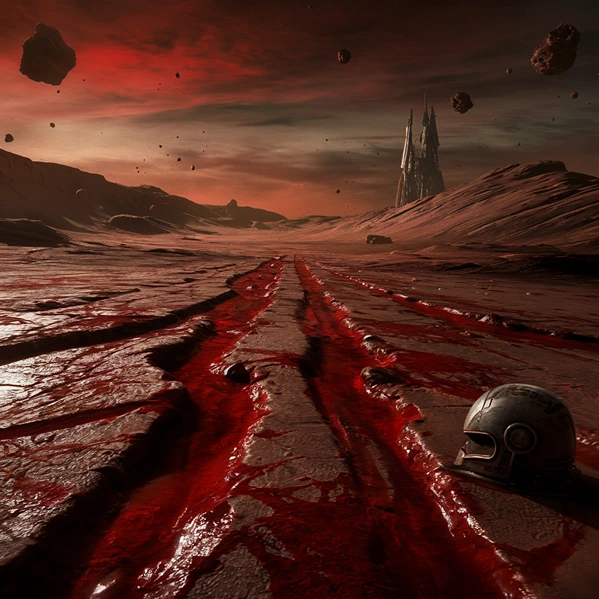
On Mars, Big Ears Are A Perfect Idea
Do you know the story about how in one of the Beatles’ songs (“A Day in the Life”), there is a whistle so high that only dogs – like Paul McCartney’s dog- can hear it? Well, if the Beatles were alive today, they would have had to work hard to create a song that would suit the acoustics of Mars.
The data shows that the planet produces mysterious noises that humans, and probably dogs, cannot hear. The noises are so low-frequency that only elephants can listen to them. It’s a good thing they have big ears.
There Are Many Movies About Mars, Including Some Scary Mars Movies
As is our tradition, it’s impossible to talk about particularly creepy facts about Mars without discussing the horror movies that contributed to this fear developing. You’ll probably be happy to hear that Mars has fascinated humans since the dawn of history, and you can see evidence of this in quite a few movies made about the planet over the years.
A Trip To Mars (2010)
The earliest version is probably “A Trip to Mars” from 2010, a short film (less than five minutes) by Ashley Miller. The film has shades of orange and blue, which may seem outdated to the average moviegoer. The film is about a professor who manages to get to Mars and float there with the help of a special anti-gravity powder. The problem is that he encounters various dangers on Mars, such as giant trees and creatures resembling the monsters from “The Descent.” The scary creature sends the professor to Earth, but then an unfortunate accident occurs, and the laboratory explodes, overturns, or whatever because it’s been a long time. It’s difficult to understand what we’re seeing today.
In the decades that have passed since then, there have been quite a few other films set on Mars, some even scary films:
Robinson Crusoe On Mars (1964)
A loose adaptation of the masterpiece “Robinson Crusoe” focuses on a US military commander who crashes on a deserted planet. He tries to survive against the elements and aliens with the help of scientific inventions and a monkey.
Species 2 (1998)
A few decades ago, Natasha Henstridge was one of the most significant sex symbols of Hollywood. The main reason for this statute is probably the “Species” series of films about a sexy alien named Sil who seduces men to murder them.
The second franchise film, “Species 2”, combines touches of science fiction, horror, and erotica. In the movie, Sil (Hanstridge) has become Eve, a more refined version of the alien. She tries to deal with an equally sexual creature whose origin is a human mission to Mars, who wants to destroy humanity through uncontrolled sex or something like that but finds himself attracted to her. Between us, we can understand him.
Ghosts Of Mars (2001)
“Ghosts of Mars” is a kind of combination of science fiction, horror, western, and action film from the studio of the genius John Carpenter (“Halloween,” “The Thing”, “The Mist”). The film – starring Ice Cube, Natasha Henstridge (what does she have to do with Mars?), Jason Statham, Pam Grier, and Clea DuVall – is set on a futuristic, human-inhabited Mars. The story follows a police officer and a convicted felon as they fight for their lives against the inhabitants of a local colony, who have been possessed by the spirits of the planet’s first settlers.
“Ghosts of Mars” received terrible reviews and failed at the box office, but today, some consider it a cult film.
Doom (2005)
“Doom” is a very disappointing film, based rather hauntingly on the classic video game (more precisely, the third game in the series). It takes place in 2026 when people find a portal to Mars in the deserts of Nevada. The problem is that several decades later, the research facility established on the planet got attacked by a mysterious entity, which we later learn is a deadly, monstrous, man-eating creature, a products of genetic engineering. In the cast of “Doom,” you will find impressive names like The Rock, Karl Urban, and Rosamund Pike, but despite this, the film failed at the box office.
Ad Astra (2009)
“Ad Astra” is an epic adventure film by James Gray, in which an astronaut (Brad Pitt) embarks on a seemingly impossible mission: to locate his astronaut father (Tommy Lee Jones), who got lost in space. Along the way, he discovers various dangers threatening Earth until he realizes it’s pretty fun to live here – especially after divorcing Angelina Jolie.
John Carter (2012)
“John Carter” is an epic and bombastic adventure film based on the book “A Princess of Mars,” which became a low-budget science fiction film in 2009. John Carter (Taylor Kitsch) is a former officer transferred to Mars, where he befriends a tribe of green giants living on the planet, falls in love with the princess (Lynn Collins), fights various computer effects, returns to Earth but tries to return to Mars. The film is from Disney, directed by the director of “Finding Nemo,” and the result is quite confusing. All this points to “John Carter” being a relative failure at the box office.
The Martian (2015)
“The Martian,” directed by Ridley Scott, is based on the book of the same name by Andy Weir. The movie was an awe-inspiring success, with positive reviews and seven Oscar nominations, but sadly zero wins. The plot concerns an astronaut (Matt Damon) who is abandoned on Mars and tries to survive there for years while utilizing his knowledge as a mechanical engineer, a botanist, and a character in a film whose script includes many scientific inaccuracies.

